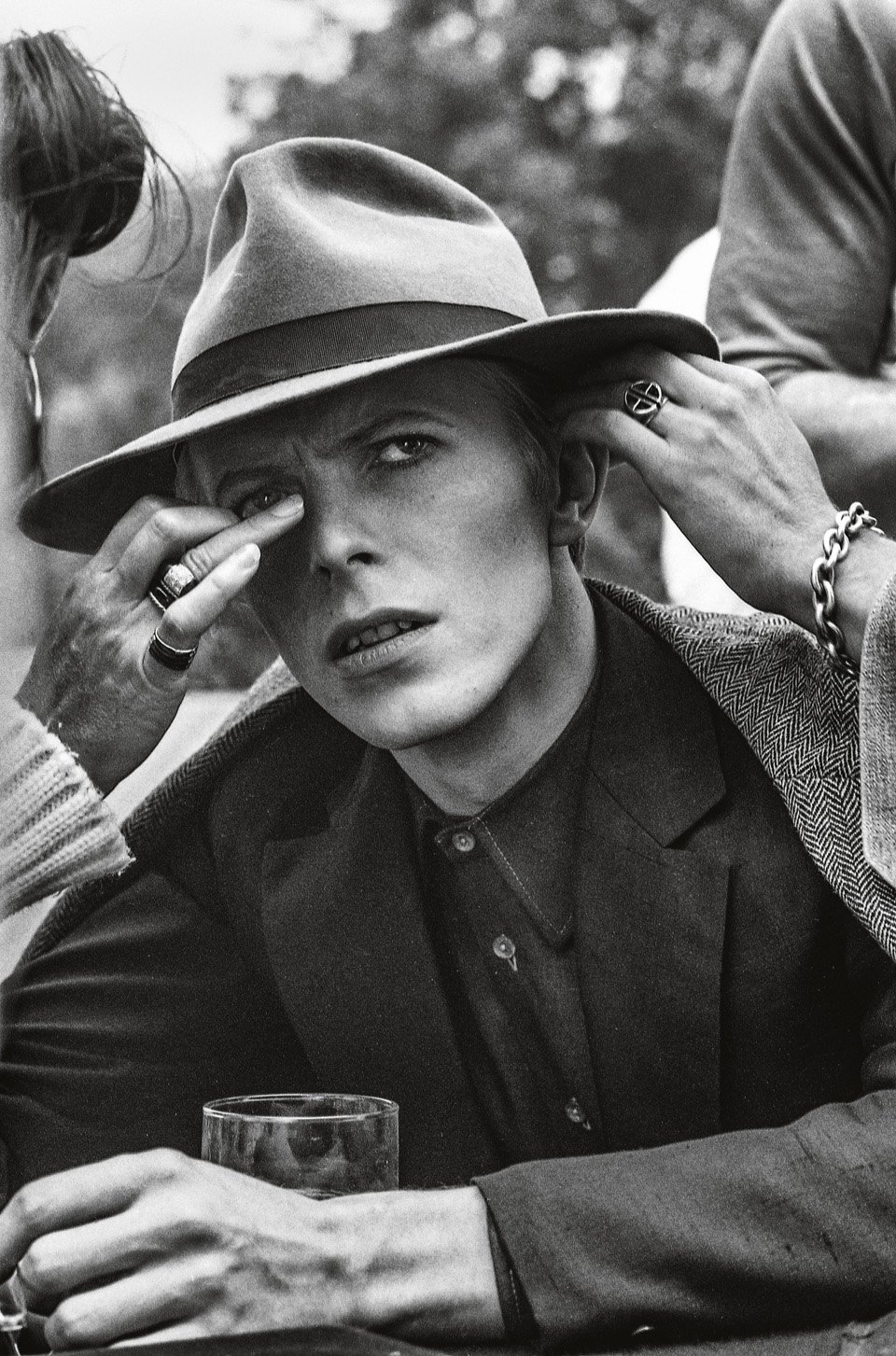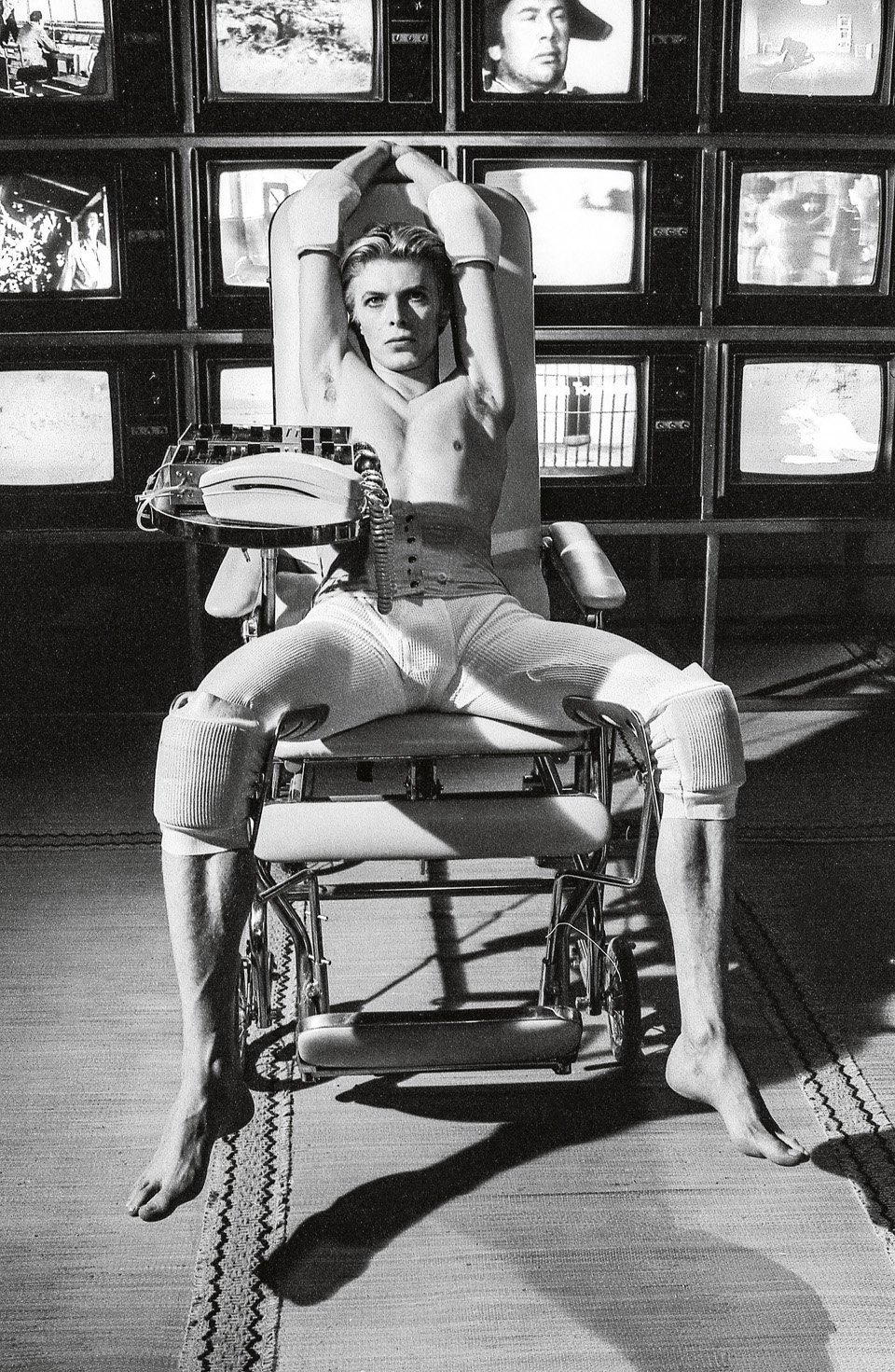A black limousine slices its way across a bleak desert landscape. On the back seat a thin, white, fragile-looking David Bowie — a shock of orange/blond hair peeking out from under his fedora — is drinking from a milk carton as he talks about his Diamond Dogs tour. Bowie had been crisscrossing North America since June 1974, promoting his Diamond Dogs album and performing tracks like Space Oddity, Rebel Rebel, and Changes. After a break in August, during which he recorded some soul songs for his next album, Young Americans, Bowie resumed touring until December, travelling between venues in his black limousine because he refused to fly. Asked about his tour of America, and the new music he was creating, Bowie looks into the carton: “There’s a fly floating around in my milk and it’s a foreign body. That’s kind of how I felt. I’m a foreign body here, and I couldn’t help but soak it up. It has just supplied a need in me. It has become a mythland.” He continues: “There is an underlying unease [in America]. They’ve developed a superficial calmness to underplay the fact that there’s a lot of pressure here.” Bowie also feels an underlying unease in his own work. He had created Major Tom in Space Oddity, Ziggy Stardust, and Aladdin Sane: “They are all facets of me; I got lost at one point. I couldn’t decide whether I was writing characters, or the characters were writing me, or whether we were all one and the same.”

Film director Nicolas Roeg saw Alan Yentob’s fly-on-the-wall documentary Cracked Actor (broadcast by the BBC in the UK on January 26, 1975). Roeg had been working with screenwriter Paul Mayersberg on an adaption of Walter Tevis’ 1963 novel The Man Who Fell to Earth, which is about a tall, thin, white-haired, hollow-boned alien who travels to Earth, names himself Thomas Jerome Newton, patents many new technological advances through lawyer Oliver Farnsworth, accumulates wealth, forms a corporation, World Enterprises, and builds a spaceship for some unspecified purpose, yet remains a hermit, unknown and apart from all but a few people. Roeg had considered casting author Michael Crichton (The Andromeda Strain, Westworld, and later Jurassic Park) as Newton because he was 6 feet 9 inches tall, but after seeing Bowie in Cracked Actor, he said, “I couldn’t think of anybody else for the role. I didn’t know David but I’d seen his work and it became a sort of fixation because there seemed to be parallels in the attitudes and thoughts of the work that David was doing at the time.”

The Man Who Fell to Earth premiered at the Leicester Square Theatre, London, on March 18, 1976. It received mixed reviews. Roeg: “One critic complained about the line ‘All things begin and end in eternity.’ I told him, ‘You realize that’s [William] Blake?'” Upon first viewing, it was difficult to see the various plot threads, visual motifs, and themes that glued the film together because of its elliptical editing scheme. Roeg had changed the film grammar, “by taking away the crutch of time, which the audience usually holds onto. I think the film is rather like a lifetime that goes in fits and starts. At the end of people’s lives, it is difficult to find what the actual story is.” Roeg wanted the audience to “read the screen,” and let the movie “work on them.”

Over the past 40 years the film has grown in stature, not least because the film grammar that Roeg pioneered in The Man Who Fell to Earth has been assimilated by subsequent filmmakers, and audiences have learned to “read the screen.” David Bowie: “I had already been tantalized by the idea of fragmentation because I was quite a fan of William S. Burroughs’ cut-ups. Nic realized that two things colliding can present a third piece of information that none of us were aware of, and it would delight him when he saw these coincidences make sense, this order coming out of chaos. The order in chaos is now a substantial theory in science. I took away that element and invested it in a lot of my subsequent work, and I guess it reached its zenith with my work with Brian Eno. My work was certainly informed by the coincidence and fragmentation process of working on this film with Nic.”
David Bowie. The Man Who Fell to Earth is published by TASCHEN and out now.





